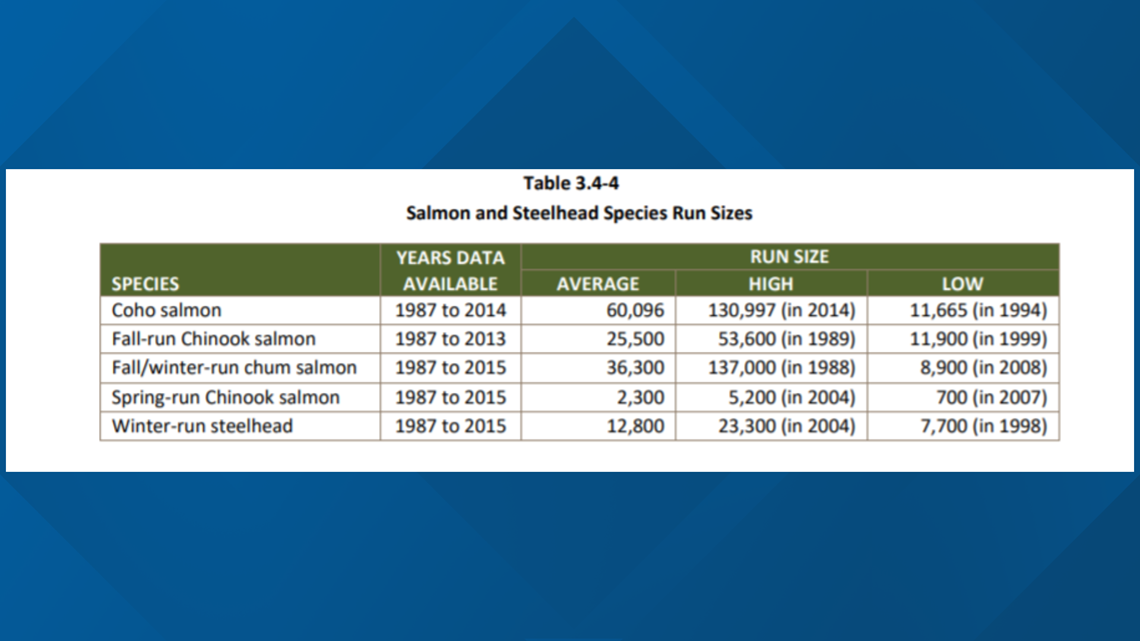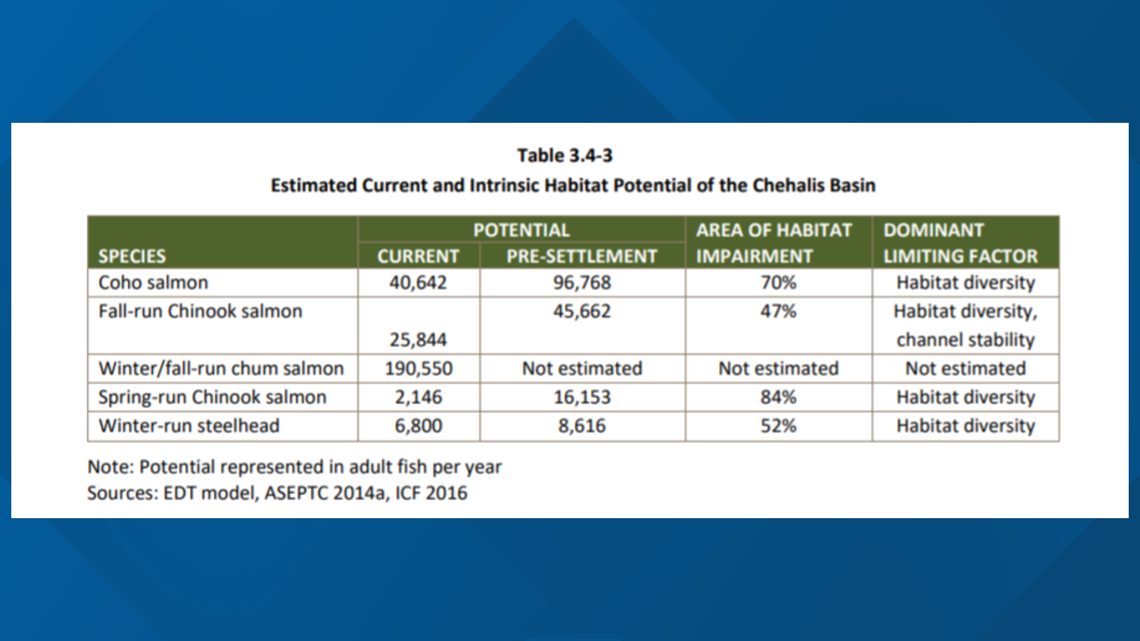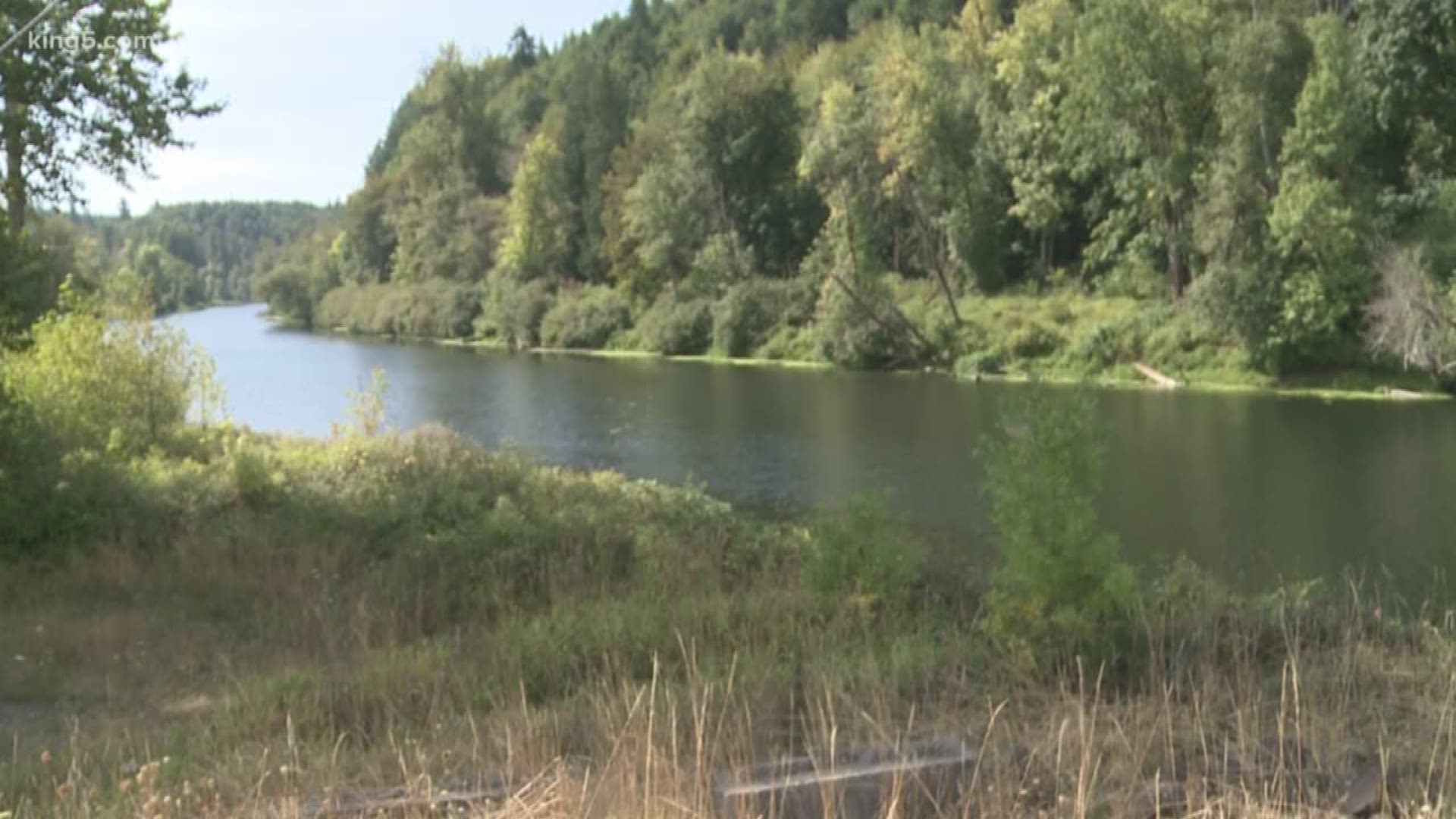CENTRALIA, Wash. — A dam proposed for the Chehalis River is drawing a lot of attention. The dam's purpose would be to reduce flooding in the area south of Pe Ell in Lewis County, but some worry it would hurt vulnerable fish.
A catastrophic flood in 2007 is often referenced by supporters who want the dam for the Chehalis River.
"When I-5 closed in 2007 for five days, that not only affected the Chehalis basin, it affected the entire region and even the country," said Erik Martin, the Chehalis River Basin Flood Control Zone District Administrator.
The proposed dam would be what's called a flow-through facility and it would only affect river flow during times of flood risk, according to Martin.
"Ninety-nine percent of the time, the river will flow just as it does today, right through the bottom of the structure," said Martin.
The site would also include a trap and haul facility to transport fish upriver when the dam is working. Both the Washington Department of Ecology and the U.S. Army Corps of Engineers are preparing Environmental Impact Statements. If those statements include severely negative impacts on fish, Martin said, the project will be tabled.
"Coming up with a solution to address that flooding is really important," said Mara Zimmerman, the Executive Director for the Coast Salmon Partnership. "What I want to make sure is that the impacts of salmon are fully considered."
Zimmerman and others are concerned about how the dam could affect already declining salmon and steelhead runs.
"I think people are very surprised that in 2019, we are talking about putting a dam up when we are spending so much time and effort taking dams down in other rivers," Zimmerman said.
The spring Chinook runs are half what they were 20 years ago.
Each year, the Chehalis welcomes back between 100,000 and 150,000 salmon and steelhead. Steelhead numbers around 8,000-10,000; fall Chinook runs are typically 15,000 to 20,000; Spring Chinook is around 2,000; Coho numbers about 30,000 to 60,000 and Chum sits anywhere between 30,000 and 60,000.




The dam is also drawing critics from fishing circles.
"Our fish runs have been down for the last few years. It's been hard for fishing guides to make a living," said Brian Oldfield, owner of Brian's Fishing Company.
Oldfield understands that the proposed dam is different than others, but he's still not convinced.
"It is still taking away an area where there is one of the last remaining big wild steelhead runs in Western Washington," Oldfield said. "As a sports fisherman, I would not like to see that."
The Washington Department of Fish and Wildlife said it's looking at different flood management options up to and including the proposed dam, but they have to evaluate the potential benefits and consider the harm a dam could cause to the river and fish.
"If you are throwing a dam on the main stem river, even if it is a dam designed to have relatively low impact, it’s going to make that challenge greater," said Michael Garrity, WDFW's representative on the Chehalis Basin Board.
"We do think there has been enough degradation in the system and enough opportunity for restoration that right now it is sort of an open question about whether we can get to that net significant benefit with the dam or if you would have to do something with smaller impacts on the flood control side."
People interested in the project can learn more on the Chehalis Basin Strategy's website. People can also comment on the proposal by clicking here.

